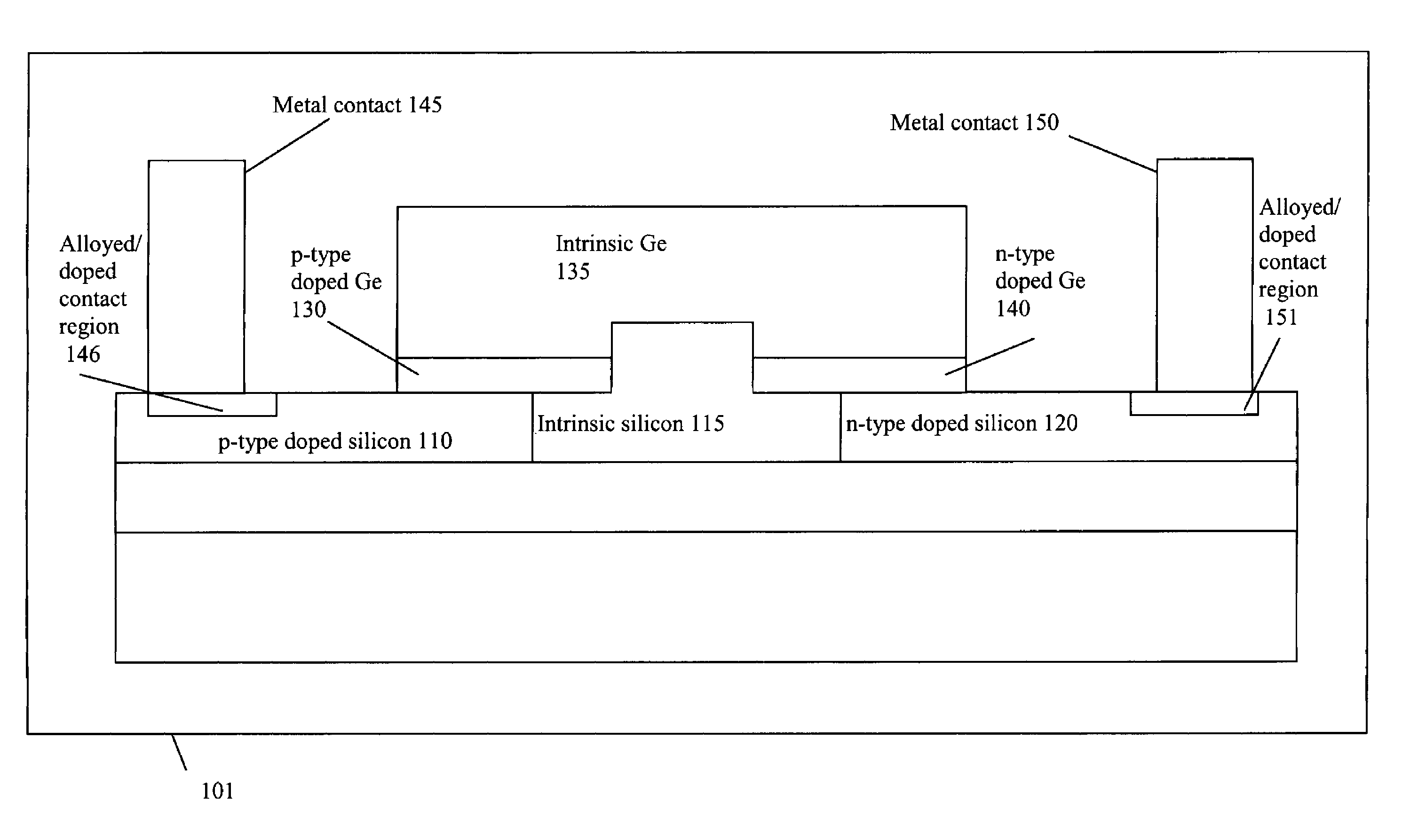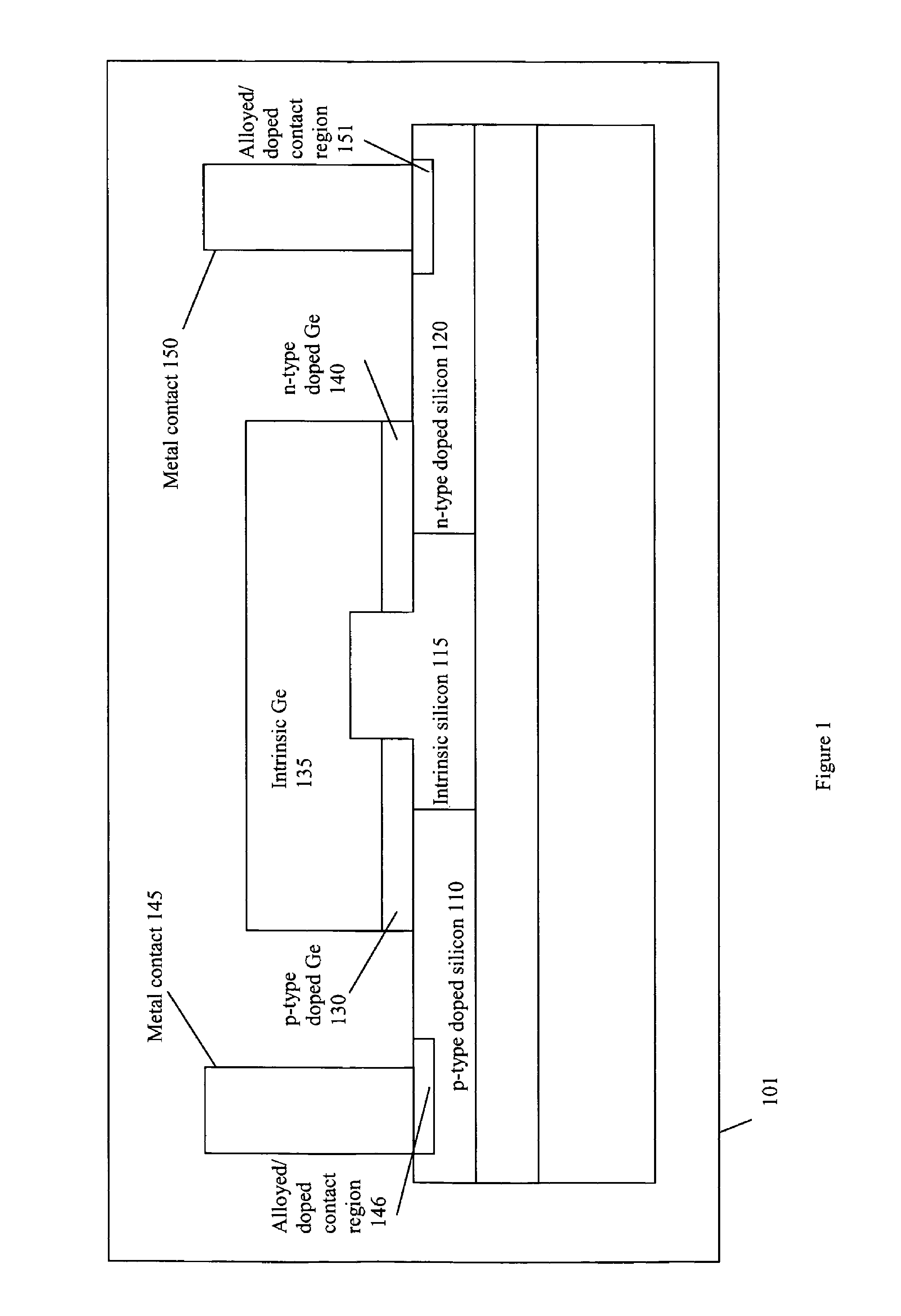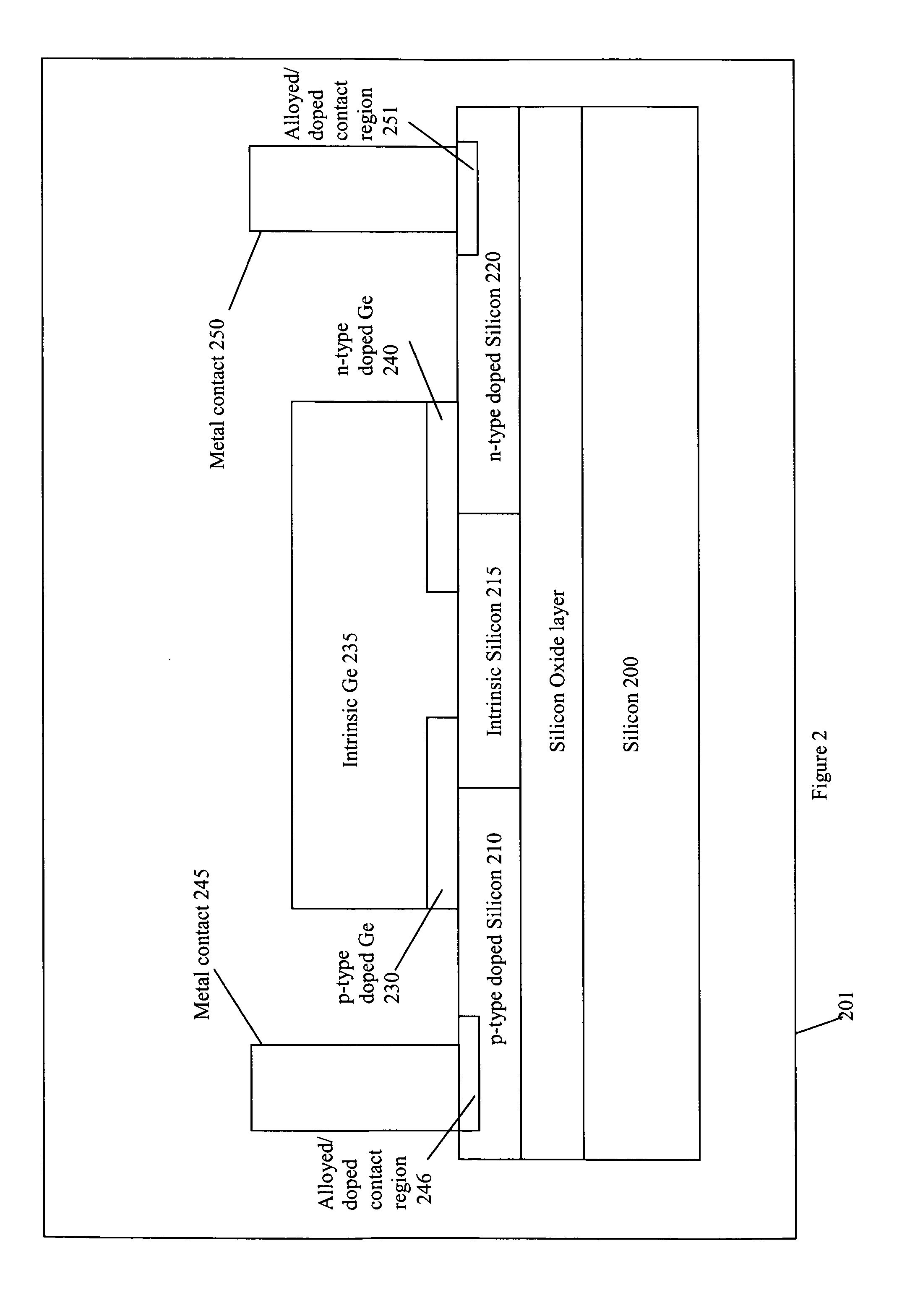Germanium silicon heterostructure photodetectors
a heterostructure, germanium silicon technology, applied in the field of semiconductor photodetectors, can solve the problems of affecting the reliability of germanium contact, affecting the quality of germanium contact, and the difficulty in integrating germanium into the standard silicon cmos process, etc., to achieve good electrical contact
- Summary
- Abstract
- Description
- Claims
- Application Information
AI Technical Summary
Benefits of technology
Problems solved by technology
Method used
Image
Examples
Embodiment Construction
[0029]FIGS. 1 and 2 illustrate examples of horizontal germanium silicon heterostructure photodetectors 101 and 201 according to the current invention. According to the current invention, a horizontal germanium silicon heterostructure photodetector comprises a horizontal germanium p-i-n diode disposed over a silicon p-i-n diode, integrated on a substrate. According to the current invention, an electrical contact is established to the p-type doped region of the silicon p-i-n and another electrical contact is established to the n-type doped region of the silicon p-i-n, thereby enabling electrical coupling to the germanium n-type doped and p-type doped regions without requiring the use of conventional metal contacts to a germanium layer.
[0030]In FIG. 1, the parasitic silicon p-i-n comprises p-type doped silicon 110, intrinsic silicon 115 and n-type doped silicon 120; the germanium p-i-n comprises p-type doped germanium 130, intrinsic germanium 135 and n-type doped germanium 140. Similar...
PUM
 Login to View More
Login to View More Abstract
Description
Claims
Application Information
 Login to View More
Login to View More - R&D
- Intellectual Property
- Life Sciences
- Materials
- Tech Scout
- Unparalleled Data Quality
- Higher Quality Content
- 60% Fewer Hallucinations
Browse by: Latest US Patents, China's latest patents, Technical Efficacy Thesaurus, Application Domain, Technology Topic, Popular Technical Reports.
© 2025 PatSnap. All rights reserved.Legal|Privacy policy|Modern Slavery Act Transparency Statement|Sitemap|About US| Contact US: help@patsnap.com



